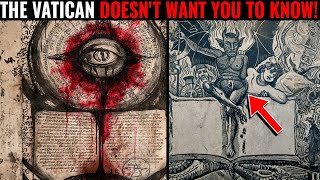This Man Claimed to Be Immortal and History Can’t Prove Otherwise

In 1743, a mysterious man appeared in London, attracting the attention of high society. This man, a virtuoso violinist and composer, was said to speak all European languages fluently and possess unusual talents, including the ability to remove flaws from diamonds. Despite his apparent wealth and education, no one knew his origins, creating intrigue around his identity.
His enigmatic background became even more pronounced when he was arrested in 1745 on suspicion of espionage during the Jacobite Rebellion, but he refused to reveal his true identity. Eventually, he returned to high society life, known for his charm and expertise on historical topics.
Relocating to France in 1748, he mingled with notable figures like Casanova and was dubbed the “Wonderman” by Voltaire. The count claimed to be over 300 years old, asserting he had discovered the secret to immortality. His remarkable skills and extensive knowledge raised questions about the feasibility of such mastery in one lifetime.
As he gained favor with King Louis XV, the count suggested revolutionary techniques for the French textile industry and was appointed to diplomatic missions. However, as his influence grew, so did resentment, leading to a warrant for his arrest, although he managed to convince authorities he was being set up.
Count Saint Germain, a mysterious figure in European history, surprised many with stories about his life and extraordinary abilities. After avoiding extradition to France, he made his way to England, but did not stay long. Instead, the Count spent about 20 years traveling all over Europe, frequently changing his identity and using at least six different aliases, including Count Bellamare, Count de Saint Germain, and Graf Zari. This made it difficult to track his movements, as he seemed to want to avoid attention.

In 1779, he appeared in the Duchy of Sleswick (now the border between Denmark and Germany). There, he quickly befriended Prince Charles of Hesse, who was fascinated with occult and alchemy. The Count lived in the prince’s castle for the next five years, setting up his own laboratory to conduct alchemy experiments. His achievements there included supposedly removing flaws in diamonds and creating large gemstones by combining smaller ones. Prince Charles viewed him as a mystical figure and appreciated the Count’s insights into alchemy and eternal life.
Although the Count was believed to have died in February 1784, his story did not end there. A year after his death, it was rumored that he attended a Masonic convention in Paris under the alias “E.E.” and continued to appear in Russia, meeting with Empress Catherine the Great. This has led to numerous reports and stories of the Count’s reappearance around the world over the past 230 years, with people claiming to have seen him from India to the Czech Republic.
One of the most prominent people who claimed to have met the Count was American author Guy Ballard, who claimed to have befriended the Count on a hiking trip in 1930. Ballard said the Count instructed him to write a series of books that would form the I AM religious movement, which at its height attracted over 1 million followers. The Count is also considered a major figure in philosophy and many other new religious movements, where he is considered an “ascended master” alongside famous historical figures such as Gautama Buddha and Jesus.
However, many people are skeptical of the Count’s abilities. His skills such as his fluency in multiple languages, his extensive knowledge of history, and his achievements in the field of alchemy are often considered exaggerated. People such as Voltaire and Casanova were not entirely convinced of the mystical stories surrounding the Count. Casanova, despite his admiration for the Count’s charm, considered him a fraud, describing him as a “charlatan” (trickster) in his memoirs.
Additionally, there is a theory that the Count may have been the son of Francis II Rosi, a Hungarian nobleman, and that he created a new identity to protect himself from attention in the volatile political climate of the era. However, much of the Count’s life remains obscure and unverified.
Whether or not Count Saint Germain actually lived on, his mystery and story have left a deep mark on history. He is a symbol of the unexplainable, and his story continues to attract attention and debate from historians and paranormal enthusiasts to this day.








